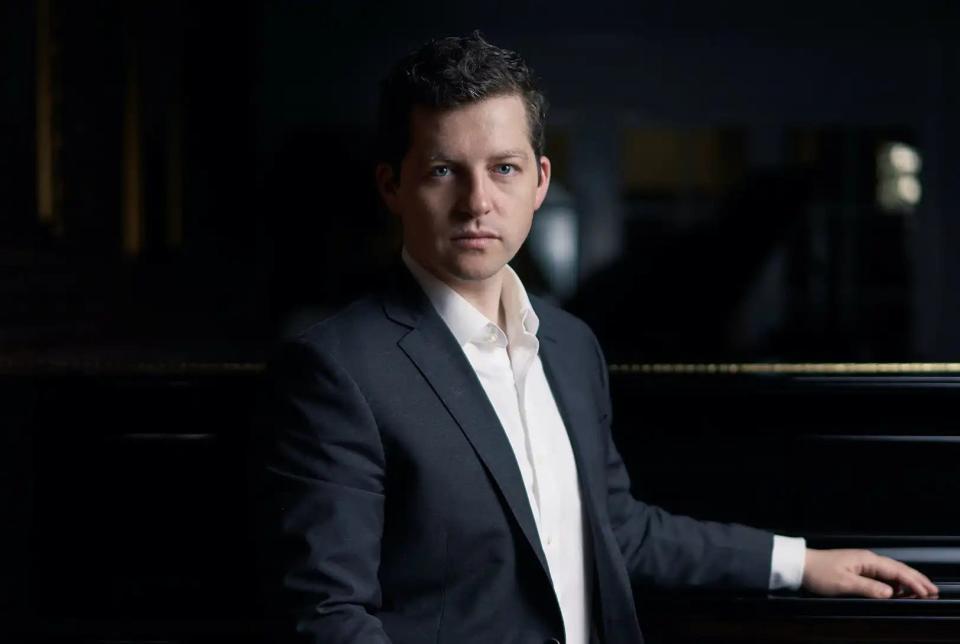Adrian Symphony Orchestra's 'Season of Stravinsky' to continue
- Oops!Something went wrong.Please try again later.
- Oops!Something went wrong.Please try again later.
ADRIAN — The Adrian Symphony Orchestra’s “season of Stravinsky” continues Sunday afternoon with a concert anchored by Stravinsky’s second major composition for the Ballet Russes “Petrushka.”
Sunday’s concert begins at 3 p.m. at Adrian College’s Dawson Auditorium. A Classical Conversation about the program with ASO Music Director Bruce Anthony Kiesling, free to all ticketholders, begins at 2:10 p.m. in the auditorium.
Tickets are $37/$31/$23 for adults, $35/$29/$23 for senior citizens, and $19/$16/$12 for students, and are available online at adriansymphony.org, by calling 517-264-3121, or at the door beginning two hours before concert time.
The program also includes a contemporary work by American composer Gala Flagello titled “Vitality” and Beethoven’s Fourth Piano Concerto with guest artist Henry Kramer.
“Vitality” was originally composed as an orchestral reading for the 2022 Aspen Music Festival, which is how it came to Kiesling’s attention. “I listened to it and there was something really compelling about it,” he said. “And it’s being played all over the place now,” including by the Ann Arbor Symphony just two days before the Adrian performance.
Flagello, who among her many endeavors is currently a member of the music faculty at the University of Michigan, will be present at the concert to introduce her piece and will also speak to the ASO’s New Music Society several days prior.
Her inspiration for “Vitality” came from a quote by dancer and choreographer Martha Graham: “There is a vitality, a life force, a quickening, that is translated through you into action and because there is only one of you in all time, this expression is unique. And it you block it, it will never exist through any other medium and will be lost.”
“She uses very short melodic ideas which I think are very compelling, and she uses all the sections of the orchestra very percussively,” Kiesling said.
With the musical nature of both “Vitality” and “Petruska,” the ASO’s music director wanted to program the Beethoven concerto as a contrast. “It’s by far the most lyrical of his concertos,” he said.
The work got off to a rather inauspicious start when it premiered publicly in December 1808. The marathon concert, which lasted more than four hours and took place in an unheated hall no less, also premiered Beethoven’s “Choral Fantasy” and his Fifth and Sixth symphonies. And after that first performance, the concerto was not heard again until composer Felix Mendelssohn reintroduced it to the world in 1836.
It departs from the then-established concerto form in several ways, including having the piano open the work alone, and “for the early audience, it didn’t fit their idea of what a concerto should be,” Kiesling said.
“It’s not like there’s one big thing that grabs you. The first movement is lyrical, the second is thoughtful, pensive, slow, and free, and very short. It doesn’t really function as a movement at all.” Then comes the very familiar third movement, which has helped make this concerto one of the most recognized and most performed in the piano repertoire.
The concerto “is (Beethoven’s) best, most famous, most engaging work,” Kiesling said, and he’s eager to work with his guest artist on the piece, especially to hear how Kramer interprets and paces that unusual second movement.
Kramer, a Juilliard graduate who counts among his honors being a recipient of the highly prestigious Avery Fisher Career Grant, “has really been on the rise,” Kiesling said.
“I have no doubt about his ability to wow our audience, and he’s gotten so busy that we might not have been able to get him if we were trying now. I always love to get artists on their way up.”

Finally on Sunday’s program, there’s “Petrushka.”
Stravinsky was fresh off his success with “The Firebird” when he began working on the music for this story of a puppet come to life. It became the second of the four ballet scores commissioned by Sergei Diaghilev for the Ballet Russes, premiering in 1911.
One of its signature ideas is what’s come to be known as the “Petrushka chord,” a dissonant clash of a C major and an F-sharp major chord that Stravinsky created to represent the puppet’s appearances on the scene.
The highly narrative piece unfolds over four tableaux, separated by drumrolls to indicate each shift in scene. “It has incredible, incredible vitality,” Kiesling said.
“And it’s so interesting. The music is so inventive, without going off the deep end. I’m just amazed at the spirit of the music. Every moment, every note has its own articulation, and it never really settles in. It just keeps going up, up, up, up.”
For musicians playing it, “it’s tricky enough without being so hard you can’t get through it. You need to be there for every single note,” Kiesling said, and he’s really looking forward to presenting it in Adrian: “I think it’s just sensational.”
If you go
WHAT: “Petrushka,” an Adrian Symphony Orchestra concert featuring Flagello’s “Vitality,” Beethoven’s Piano Concerto No. 4 with guest artist Henry Kramer, and Stravinsky’s “Petrushka”
WHEN: 3 p.m. Sunday, Nov. 12. A Classical Conversation begins at 2:10 p.m.
WHERE: Dawson Auditorium, Adrian College
TICKETS: $37/$31/$23 for adults, $35/$29/$23 for senior citizens, $19/$16/$12 for students
HOW TO ORDER: Online at adriansymphony.org, by calling 517-264-3121, at the door beginning two hours before the concert
This article originally appeared on The Daily Telegram: Adrian Symphony Orchestra's 'Season of Stravinsky' continues Nov. 12

